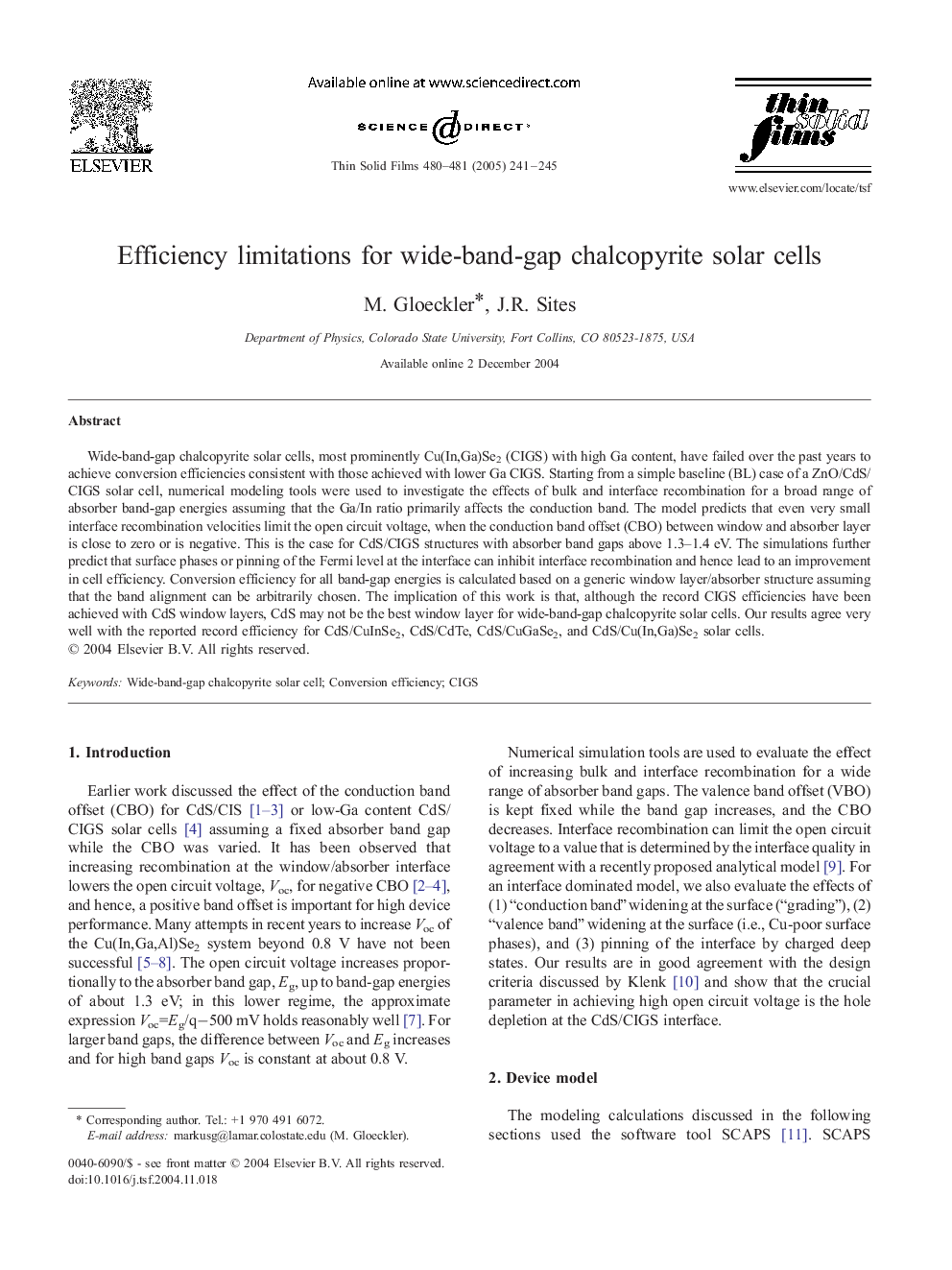| Article ID | Journal | Published Year | Pages | File Type |
|---|---|---|---|---|
| 1674853 | Thin Solid Films | 2005 | 5 Pages |
Wide-band-gap chalcopyrite solar cells, most prominently Cu(In,Ga)Se2 (CIGS) with high Ga content, have failed over the past years to achieve conversion efficiencies consistent with those achieved with lower Ga CIGS. Starting from a simple baseline (BL) case of a ZnO/CdS/CIGS solar cell, numerical modeling tools were used to investigate the effects of bulk and interface recombination for a broad range of absorber band-gap energies assuming that the Ga/In ratio primarily affects the conduction band. The model predicts that even very small interface recombination velocities limit the open circuit voltage, when the conduction band offset (CBO) between window and absorber layer is close to zero or is negative. This is the case for CdS/CIGS structures with absorber band gaps above 1.3–1.4 eV. The simulations further predict that surface phases or pinning of the Fermi level at the interface can inhibit interface recombination and hence lead to an improvement in cell efficiency. Conversion efficiency for all band-gap energies is calculated based on a generic window layer/absorber structure assuming that the band alignment can be arbitrarily chosen. The implication of this work is that, although the record CIGS efficiencies have been achieved with CdS window layers, CdS may not be the best window layer for wide-band-gap chalcopyrite solar cells. Our results agree very well with the reported record efficiency for CdS/CuInSe2, CdS/CdTe, CdS/CuGaSe2, and CdS/Cu(In,Ga)Se2 solar cells.
